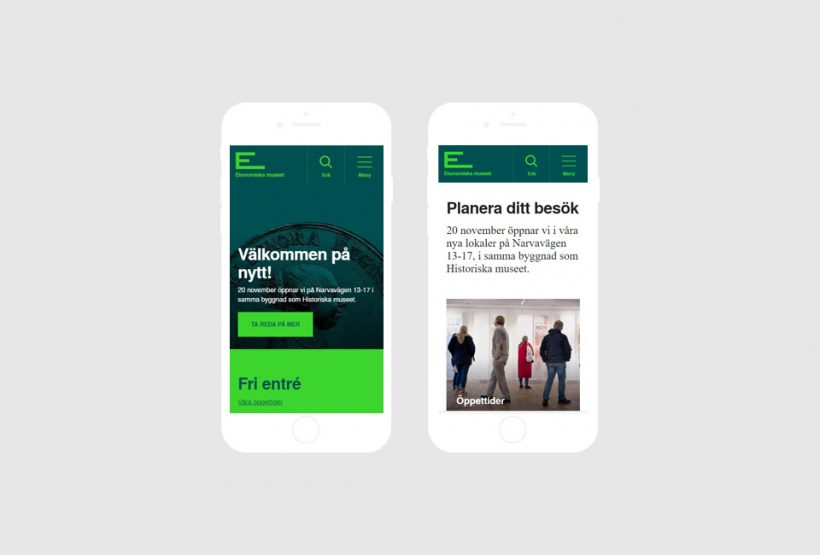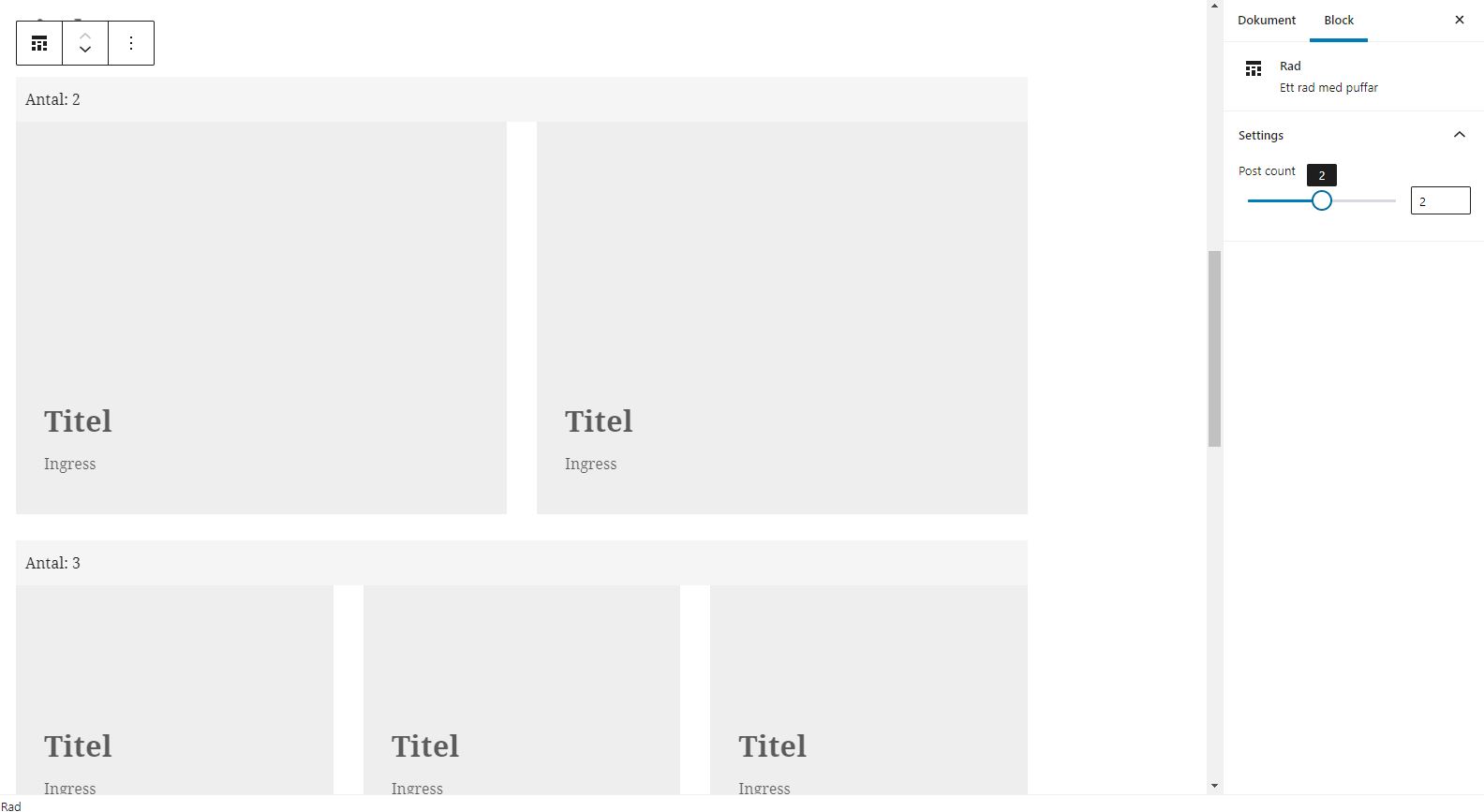
The Royal Coin Cabinet changes its name to the Economy Museum, moves to new premises, launches a new brand platform and a new website. It is the first of six museum websites within the National Historical Museums to be rebuilt and modernized.
In addition to our six museums, we have two more projects waiting to get their new websites, the project History of Sweden aimed at schoolchildren and a new collections search.
Our digital agency Bazooka has earlier this year developed custom web designs for all museums and for History of Sweden. It will form the basis of the new websites. We have also started work on common functionality such as calendars and functions to embed collections information. Thanks to the fact that from the beginning we have taken into account several websites that should be able to have partially different design and function, we have identified a number of elements, or blocks as it is called in WordPress, which with minor settings can be changed. In this way, we create several variation possibilities based on a given basic theme. In the example with the calendar, you will be able to switch on and off sub-functions to suit the needs of the different museums.
The new version of WordPress (5+) uses blocks, which means that we do not need fixed templates for different page types, but instead build our page types ourselves using the blocks. Much more flexible and means we don’t have to consult our agency every time we want to change the look of the website.
Above you see a simple two-part teaser where you can decide where the image is placed, if it should have a call-to-action button, what color scheme it should have and whether it should be full-width or column-wide. Theme discreet and theme contrast provide different colors for the different museums based on their graphic profile.
Accessibility
One of the most important requirements for the new websites has been to make them as accessible as possible. Something that is obvious to us and that is in line with our mission, but where new legal requirements also make it a hygiene factor. In addition to setting the requirement for WCAG 2.1 AA in the procurement of our digital agency, we have signed a contract with accessibility experts Access lab and they will conduct an independent review of our websites before release. Our internal web group consisting of nine people also does user tests.
The idea is that in the same way that it is difficult to proofread your own text, it can be good idea to have an independent reviewer of accessibility, both technical and content. Access lab will continuously help us in the development of new modules and functions and support us with the content work.
The next web-launch will be History of Sweden this December.

